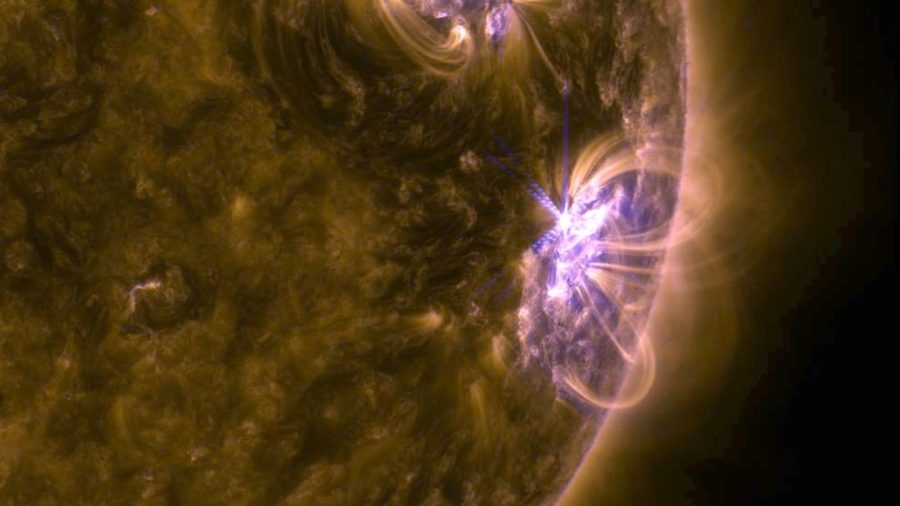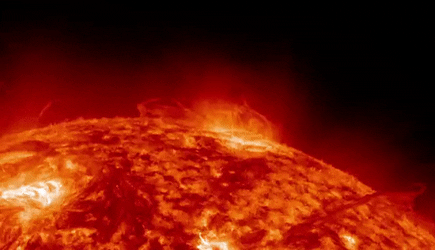Authorities are warning of potentially disrupting power grids from the solar flare and the Northern Lights may be seen as far south as New York.
The following written content from Alexander Martin

The flare – officially known as a coronal mass ejection (CME) – was observed on Saturday on the side of the sun directly facing our planet and comes as we enter a period of increased solar activity.
An alert was published by the US National Oceanic and Atmospheric Administration which warned the geomagnetic storm could cause power grid fluctuations with voltage alarms at higher latitudes, where the Earth is more exposed.
NOAA added that satellites may be impacted too and could exhibit “orientation irregularities” meaning ground control would have to redirect them, as well as anything in low-Earth orbit experiencing increased drag.
The geomagnetic storm could reach category G2, which is moderately strong according to the agency.Advertisement
“Event analysis and model output suggest CME arrival around midday on 11 Oct, with lingering effects persisting into 12 Oct,” it added, with midday in the US meaning late afternoon and early evening in the UK. Read more from SKY
The following written content from By Yaron Steinbuch
There are several classes of solar flares, with X-class considered the most intense. The one observed Saturday was an M-class event, the second-strongest.
Last month, University of California Irvine assistant professor Sangeetha Abdu Jyothi warned that an unmitigated solar “superstorm” could “cause large-scale Internet outages covering the entire globe and lasting several months.”
Most of the time, we’re protected from the sun’s radiation thanks to the ionosphere, otherwise known as Earth’s magnetic shield. But sometimes, solar flares penetrate our shield and wreak havoc on just about anything powered with electromagnetism.
It has been estimated that the potential damage caused by a disastrous CME in 2012, which only narrowly missed our planet, would have cost the US alone up to $2.6 trillion.
“Our [internet] infrastructure is not prepared for a large-scale solar event,” Jyothi told Wired recently, citing such consequences as widespread blackouts, mass traffic jams and a breakdown in the global supply chain, to name a few.





